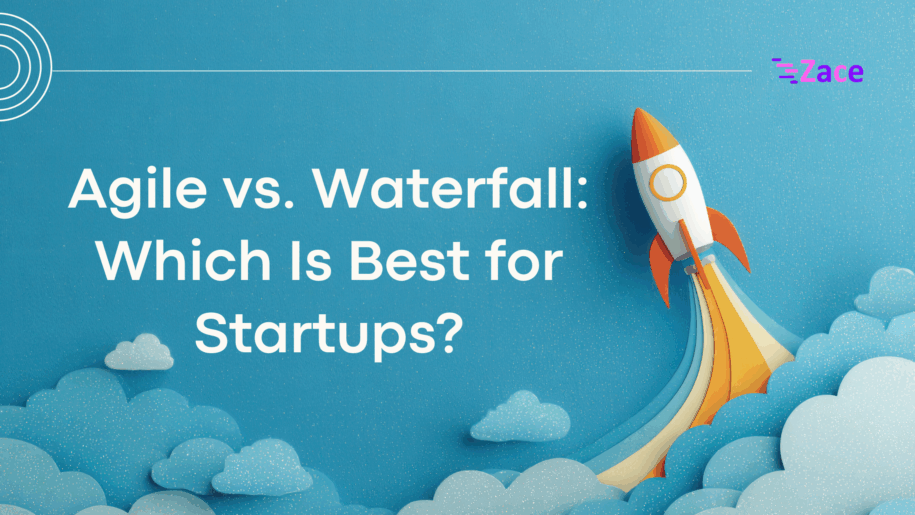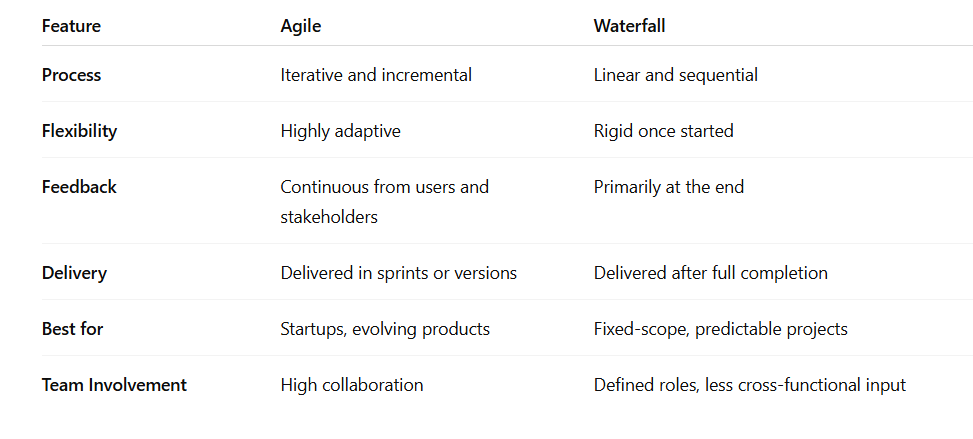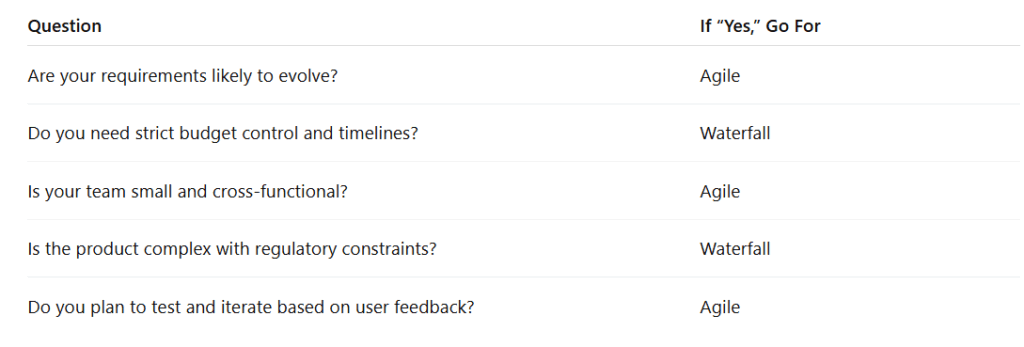Agile vs. Waterfall: Which Is Best for Startups?

Tags: Agile, Gantt chart, Project Management, project planning, Waterfall, Zace
Comments are closed.

In today’s fast-paced startup ecosystem, choosing the right project management methodology can make or break your success. Among the most debated approaches are Agile and Waterfall — each with its own structure, benefits, and challenges.
If you’re a startup founder or project manager trying to decide which model fits your workflow, this guide breaks down everything you need to know — from key differences to real-world applications and how to decide what’s best for your team.
We have discussed about the differences between the methodologies in previous blog posts.
 Benefits of Choosing the Right Methodology
Benefits of Choosing the Right MethodologySelecting the right methodology early can lead to:
Faster product-market fit
Better alignment with investor expectations
Reduced risk and rework
Stronger collaboration and communication
Your project management style should mirror your business goals, not constrain them.
 Agile vs. Waterfall: Key Differences
Agile vs. Waterfall: Key Differences
 Why Startups Lean Toward Agile
Why Startups Lean Toward AgileStartups thrive in uncertainty — and Agile’s flexibility makes it a natural fit. Here’s why Agile often works best for early-stage companies:
1. Faster Time-to-Market
Agile enables startups to launch a Minimum Viable Product (MVP) quickly and improve it based on user feedback rather than spending months perfecting a product that may miss the mark.
2. Enhanced Adaptability
Markets evolve fast. Agile allows teams to pivot when customer needs or trends shift — without derailing the entire project plan.
3. Continuous Feedback Loop
Agile promotes customer collaboration, ensuring the final product aligns closely with real-world demand instead of initial assumptions.
4. Efficient Resource Utilization
Startups often have limited budgets and manpower. Agile helps optimize efforts through short sprints, measurable progress, and minimal waste.
 When Waterfall Still Makes Sense for Startups
When Waterfall Still Makes Sense for StartupsWhile Agile dominates the startup scene, there are scenarios where Waterfall remains a strong choice.
1. Projects with Fixed Requirements
If your startup is executing a contracted project with predefined deliverables (like government software or compliance-driven tools), Waterfall provides clarity and accountability.
2. Predictable Budgets and Timelines
When investors or clients demand strict timelines and cost estimates, Waterfall’s structure offers confidence through documentation and upfront planning.
3. Hardware and Manufacturing Projects
For physical products or systems where changes mid-project are costly, a sequential model is safer and more cost-effective.

 Choosing the Right Methodology for Your Startup
Choosing the Right Methodology for Your StartupHere’s a quick checklist to help you decide:

It doesn’t have to be either-or, always.
Many startups are now adopting a hybrid model — blending Agile flexibility with Waterfall’s structured planning.
For example:
Use Waterfall for initial product design and requirement documentation.
Switch to Agile for iterative development and testing.
This approach ensures both strategic control and adaptability, giving startups the balance they need to scale effectively.
 Agile Wins Flexibility, Waterfall Wins Stability
Agile Wins Flexibility, Waterfall Wins StabilityIn the Agile vs. Waterfall debate, there’s no one-size-fits-all answer.
Choose Agile if your startup values innovation, speed, and adaptability.
Choose Waterfall if you require structure, predictability, and documentation-driven progress.
Ultimately, your success depends on how well your team executes — not just the framework you choose.

 Still have doubts ?
Still have doubts ? Not necessarily. Agile suits startups with evolving goals, but Waterfall is ideal when requirements are fixed and timelines strict.
Yes, but it requires careful transition planning to realign workflows, documentation, and stakeholder expectations.
Popular tools include Jira, Trello, and Asana — all offering sprint tracking, backlog management, and collaboration features.
Agile fosters transparency, accountability, and innovation through frequent communication and iterative progress.
It combines Waterfall’s upfront planning with Agile’s flexibility — ideal for startups balancing predictability with adaptability.
Reach out ~ let’s discuss more on this, if you are still wondering how to handle projects!